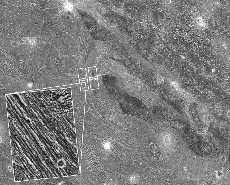This image shows the dark terrain of Ganymede.
Click on image for full size
NASA
Does Ganymede Have a Surface in Motion?
There has been no icy volcanism on Ganymede, nor continental drift, but it does seem that there have been movements of the surface.
Examination of the surface of Ganymede reveals many kinds of faulting. These provide evidence of the kind of pushing and stretching which the crust of Ganymede has undergone through time.
Examination of the surface of Ganymede shows:
- rifting (like continental rifting of Earth)
- faults which cut the surface into a leaning stack of "dominoes"
Examination of the surface also showed that the younger areas were "pushed and shoved" differently than the older areas.
This style of icy-tectonism proves to be different from either that of Callisto or Europa. (The other major moon of Jupiter, Io has a more conventional form of volcanism.) The difference has to do with processes in the interior of Ganymede
Last modified February 26, 2007 by Lisa Gardiner.
You might also be interested in:
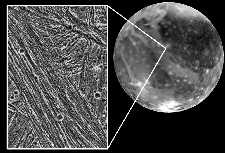
Instead of icy-volcanism, the surface of Ganymede reveals a gradual surface stretching which is similar to the crustal stretching of the Earth. In this case, the folding and stretching of the crust of
...more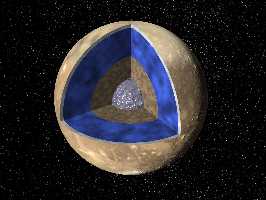
The picture on this page shows what the inside of Ganymede looks like. Scientists have made this model based on measurements by the Galileo spacecraft. The picture shows a samll core of metal (silver),
...more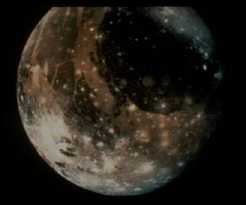
The surface of Ganymede is halfway between Callisto and Europa. There are portions of the surface of Ganymede that have many craters, like Callisto and there are portions which are relatively new, and
...more
Amalthea was discovered by E Barnard in 1872. Of the 17 moons it is the 3rd closest to Jupiter. Amalthea is about the size of a county or small state. Amalthea is named after the goat in Greek mythology
...more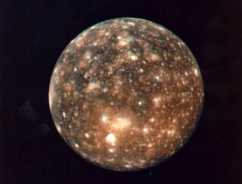
Callisto was first discovered by Galileo in 1610. It is the 2nd largest moon in the solar system, and is larger than the Earth's moon. It is about as big as the distance across the United States. Callisto
...more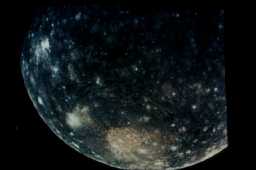
Measurements by the Galileo spacecraft have been shown that Callisto is the same inside from the center to the surface. This means that Callisto does not have a core at the center. This means that, unlike
...more
Many different types of surface are shown in this picture. In the front is a huge crater, which goes for a long way over the surface. This crater could be compared to that of Mimas. They both show that
...more


